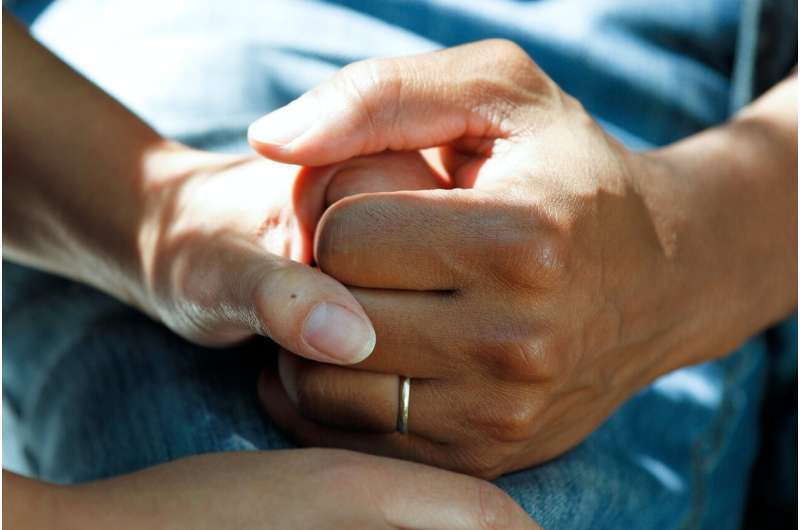Ideal surgical results less likely if cancer patients live in vulnerable communities

A new study finds that older cancer patients are less likely to have optimal results following their cancer operation if they live in an area highly affected by social challenges, especially if they are racial-ethnic minorities. The study was selected for the 2020 Southern Surgical Association Program and published as an article in press on the Journal of the American College of Surgeons website in advance of print.
Study investigators from The Ohio State University (OSU) used a novel risk stratification tool called the social vulnerability index (SVI), a composite measure of 15 social and economic factors. Although the U.S. Centers for Disease Control and Prevention (CDC) created the SVI using U.S. census data to identify communities needing greater support during disasters, researchers recently have applied it to medical studies. The CDC defines social vulnerability as “potential negative effects on communities caused by external stresses on human health.”1
The study was conducted in persons aged 65 and older. Currently, older adults account for 37 percent of all inpatient operations, and 33 percent of outpatient procedures performed annually in the U.S.2,3 The researchers found that older patients who undergo a cancer operation and reside in areas with high social vulnerability were less likely to achieve a “textbook outcome” as a result of their procedures. A textbook outcome indicated the patient did not have in-hospital complications, an extended hospitalization, or a readmission within three months and was alive 90 days after surgery, said Timothy Pawlik, MD, MPH, MTS, Ph.D., FACS, senior author of the study, professor and chair of the Department of Surgery in the OSU College of Medicine, and surgeon-in-chief at OSU Wexner Medical Center, Columbus.
“This study speaks to how health care and health outcomes extend beyond the doors of the hospital and even beyond the specifics of the disease the patient may have,” Dr. Pawlik said. “Ultimately, the resources in the patient’s community may be as important to a patient’s health as what goes on in the hospital.”
Included in the study were 203,800 patients from the 2016-2017 Medicare inpatient claims files who underwent an operation for one of three common cancers—lung, colon, and rectal—or cancer of the esophagus between 2013-2017. The investigators merged the Medicare information with the CDC’s SVI for each patient’s county of residence. The SVI includes county-level data such as unemployment rates, racial distribution, prevalence of people with disabilities, vehicle access, and overcrowded community living. A high SVI score indicates greater social vulnerability.
Only 56 percent of patients experienced a textbook outcome, the researchers reported. Residents of a high-SVI area had roughly a one in five lower odds of achieving a textbook outcome versus patients from low-SVI areas, they wrote in the article.
Differences noted by race
As social vulnerability increased, the outcomes differences by race became more pronounced, Dr. Pawlik said.
“Especially for Black and Hispanic individuals, the impact of residing in a socially vulnerable community was much more pronounced,” Dr. Pawlik said. “They had much greater risk of having adverse outcomes than white patients.”
Even when the researchers matched patients’ characteristics, such as age and cancer type, they found that Black and Hispanic patients from high-SVI counties had 26 percent lower odds of receiving a textbook outcome compared with whites from a low-SVI county.
In general, what drove the differences in textbook outcomes were complications and prolonged hospitalization, according to Dr. Pawlik. “Patients from socially vulnerable communities had the most difficulty achieving a without a complication, and they were the most likely to have an extended length of stay. These patients are in double and triple jeopardy,” he said.
“Our data clearly showed a disparity in health, as defined by textbook outcome, with poorer outcomes if a patient was a minority, or from a highly socially vulnerable community, or, in particular, both.”
Recommendations based on findings
Dr. Pawlik cautioned that because the SVI is population based, it is not a useful tool to calculate risk at the individual level. Instead, he said health care providers should ask about the patient’s home situation and address any lack of resources or support.
“Make sure patients have the necessary support in the community they are going back into—access to food, basic services, transportation, home health care, wound care, things like that,” Dr. Pawlik said. “I think we can do a better job with our discharge planning and partnering with community leaders to ensure a smoother transition from the hospital back into the community.”
In an invited commentary, Selwyn M. Vickers, MD, FACS, of the University of Alabama School of Medicine, wrote that the study findings highlight “a growing understanding that social determinants of health have a significant influence on the health conditions and outcomes of our citizens.” Regarding the higher death rate occurring among individuals with detrimental social determinants of health during the coronavirus pandemic, Dr. Vickers wrote, “Unfortunately, all too often this happens to reside mostly in minority communities.”
Source: Read Full Article
